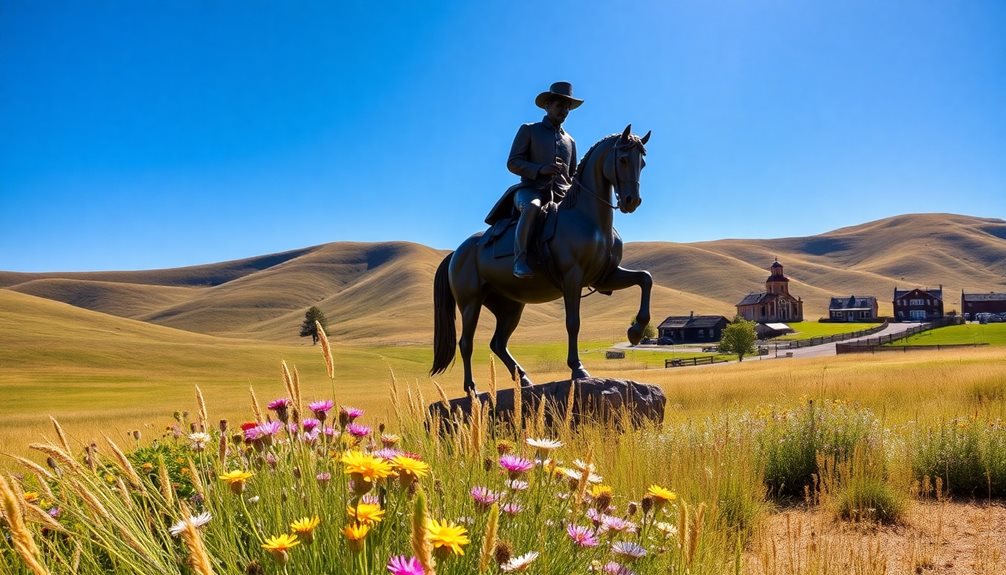Sheridan, Colorado, is a home rule municipality in Arapahoe County within the Denver-Aurora-Lakewood Metropolitan Statistical Area. Early settlers like John McBroom and Peter Magnes established homesteads in the mid-19th century, with the area initially known as Petersburg. It merged with Sheridan Junction to become the incorporated town of Sheridan in 1890. Fort Logan's establishment in 1887 greatly influenced growth. Today, Sheridan continues to evolve with modern urban projects while preserving historical heritage. Further exploration reveals the intricate details of its development and community life.
Expert Highlights
- Sheridan is in Arapahoe County, Colorado, within the Denver metro area.
- It was initially settled by John McBroom in 1857.
- The town was formed from Petersburg and Sheridan Junction in 1890.
- Fort Logan nearby spurred early growth starting in 1887.
- Sheridan is now a Home Rule Municipality with a diverse economy.
Early Settlement and History

As the first white settlers began to inhabit the area now known as Sheridan, Colorado, a complex tapestry of history and growth started to unfold.
John McBroom, a wagon master with the U.S. Army, initially settled here in 1857, returning later to file a homestead claim.
John McBroom, a U.S. Army wagon master, initially settled in 1857 before returning to establish his homestead later.
In 1859, Swedish immigrant Peter Magnes also arrived, introducing sugar beets to the region.
By 1873, Magnes had platted the town of Petersburg, which later merged with Sheridan Junction to form the incorporated town of Sheridan in 1890.
The area's growth was further spurred by the establishment of nearby Fort Logan in 1887.
Today, this charming Colorado town continues to preserve its rich historical heritage while embracing modern development.
Historical Figures and Influences

Several influential figures played pivotal roles in shaping the history of Sheridan, Colorado. John McBroom, the first settler, arrived in 1858, establishing a homestead and introducing irrigation practices. His interactions with Native Americans were notable for their amicability.
Philip Sheridan, though not directly involved in the settlement's early history, was an influential figure in local military assessments, as General Sheridan's presence and advice were sought in the area.
Sheridan Junction's development was later impacted by Isaac McBroom's plats and agricultural innovations. Like nearby Johnstown Colorado, the area's growth was shaped by agricultural development and irrigation systems.
Growth and Modern Developments

Building on the foundational legacy left by historical figures like John McBroom and Philip Sheridan, Sheridan, Colorado, has evolved considerably through contemporary urban development projects.
Sheridan, Colorado, fosters growth through modern urban developments, honoring historical figures John McBroom and Philip Sheridan.
These projects focus on enhancing living conditions and promoting sustainable growth.
Key developments include:
- Bonsai Flats: Affordable apartments aimed at low-income residents.
- River Point: New retail and medical offices under construction.
- Sheridan Station Apartments: Affordable housing next to a transit hub, fostering community connectivity and sustainable living.
Community Life and Attractions**
Sheridan, Colorado, fosters a vibrant community life, underscored by a strong sense of shared experiences and accessible local attractions.
The city hosts events like Sheridan Celebrates, a community festival featuring parades and fairs. Residents engage through the South Suburban Parks and Recreation system, which includes the Sheridan Recreation Center, offering facilities for sports, arts, and entertainment.
Community resources, such as Ruthy's Closet, provide support through clothing donations.
Additionally, the Sheridan Historical Society preserves local history while promoting community awareness.
Expert Final Thoughts
Sheridan, Colorado, concludes its narrative as a resilient community shaped by early settlers like John McBroom and prominent figures such as General Philip H. Sheridan. The incorporation in 1890 marked a pivotal point, driven by military presence and railroads. Today, it remains a part of the Denver metropolitan area, with ongoing revitalization efforts and a strong historical foundation. Despite economic challenges, Sheridan continues to evolve with careful city planning and community engagement.




